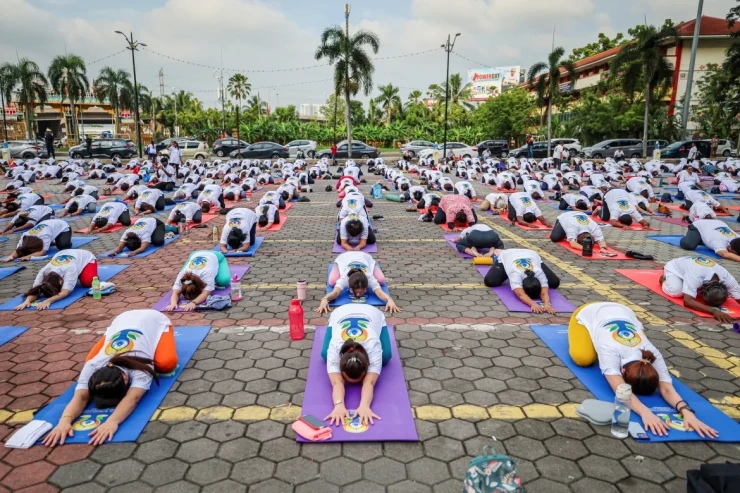
Yoga, derived
from the Sanskrit word meaning "union," is a multifaceted practice
encompassing physical postures (asanas), breathing techniques
(pranayama), and meditation (dhyana). Its origins trace back thousands
of years to India, evolving from spiritual practices into a widely
accessible system for enhancing physical and mental well-being. This
text will explore its key aspects and applications relevant to a
professional context.
Key Components of Yoga:
Asanas (Physical Postures): Asanas constitute a fundamental aspect
of yoga, involving a series of postures designed to increase
flexibility, strength, balance, and body awareness. These poses range
in difficulty, accommodating individuals of varying fitness levels and
experience. The benefits extend beyond physical fitness, impacting
cardiovascular health, reducing chronic pain, and improving posture.
Specific asanas can target particular muscle groups, promoting
rehabilitation and injury prevention.
Pranayama (Breathing
Techniques): Pranayama encompasses various breathing exercises that
regulate the flow of prana (vital energy). These techniques influence
the autonomic nervous system, reducing stress, lowering blood pressure,
and improving respiratory function. Specific pranayama practices, such
as diaphragmatic breathing or alternate nostril breathing, can be used
to manage anxiety and promote relaxation.
Dhyana
(Meditation): Meditation forms an integral part of yoga, fostering
mindfulness and mental clarity. Regular meditation practice can reduce
stress, improve focus and concentration, and enhance emotional
regulation. Techniques range from focused attention on the breath to
observing thoughts and sensations without judgment.
Applications in a Professional Context:
Yoga's holistic approach offers numerous benefits applicable across various professional settings:
Stress Management: The combination of asanas, pranayama, and
meditation provides a powerful toolkit for managing stress, a prevalent
issue in many workplaces. Yoga programs can be implemented to improve
employee well-being, reduce burnout, and increase productivity.
Workplace Wellness Programs: Yoga classes are increasingly
integrated into workplace wellness programs, offering employees an
accessible and effective method for improving their physical and mental
health. This can contribute to reduced absenteeism, improved morale,
and a more positive work environment.
Rehabilitation and
Injury Prevention: Specific yoga practices can be incorporated into
rehabilitation programs to improve flexibility, strength, and range of
motion after injury. Preventive yoga programs can help reduce the risk
of musculoskeletal injuries, common in physically demanding professions.
Enhanced Performance: Yoga's emphasis on mindfulness and body
awareness can translate into improved performance in various
professions. Increased focus, concentration, and emotional regulation
can enhance cognitive function and decision-making skills.
Leadership Development: Yoga's principles of mindfulness and
self-awareness can be applied to leadership development programs,
fostering emotional intelligence, empathy, and effective communication
skills.
Conclusion:
Yoga offers a comprehensive
approach to wellness with demonstrable benefits applicable in numerous
professional contexts. Its integration into workplace programs,
rehabilitation initiatives, and leadership development strategies can
contribute to improved employee well-being, increased productivity, and
enhanced overall organizational performance. Further research continues
to explore the specific applications and impact of yoga across a range
of professional fields.
Event Venue
Name
Edur GardenLocaiton
Ganjam, BerhampurEvent Expired